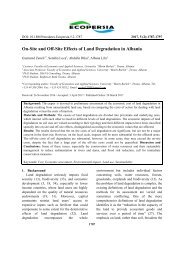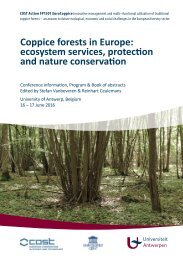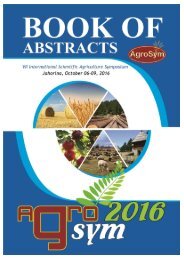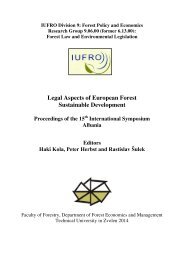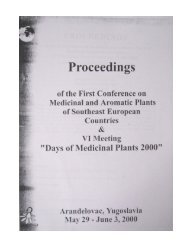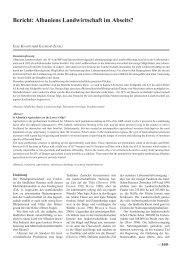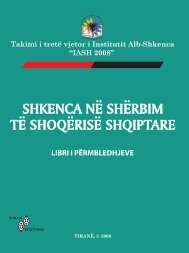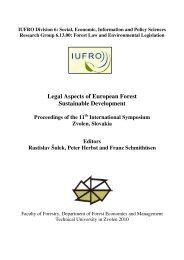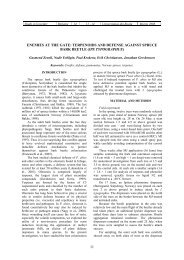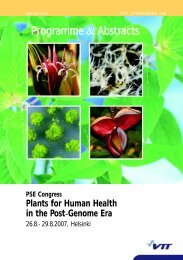You also want an ePaper? Increase the reach of your titles
YUMPU automatically turns print PDFs into web optimized ePapers that Google loves.
INDUCED CHEMICAL DEFENSES IN CONIFERS 19<br />
point at 2.5 cm per day in the axial direction. 49 In needles of seedlings, chitinolytic<br />
activity increased within 2 to 4 days after inoculation with the root pathogen<br />
Rhizoctonia, sp. 79 For chitinase expression, as for terpene induction as discussed<br />
above, jasmonates are clearly a component of the signal transduction cascade in both<br />
pine and spruce, as is ethylene in other Pinaceae. 82<br />
Many aspects of the defensive function of conifer chitinases remain to be<br />
clarified. For example, the multiple chitinases induced by infection probably are not<br />
redundant defense enzymes based on data from angiosperms, but instead are<br />
complementary hydrolases with synergistic action on N-acetylglucosaminecontaining<br />
substrates. 70 Of the class IV chitinases, at least one member has been<br />
proposed to release chito-oligosaccharides from an endogenous substrate in P. abies,<br />
promoting programmed cell death needed for proper embryo development. 83<br />
Notably, a practically identical class IV chitinase of P. abies shows differential<br />
spatiotemporal expression in bark among clones that display variation in resistance<br />
to H. annosum. 75 This raises the question of whether certain conifer chitinases might<br />
have an indirect role in host defense by eliciting programmed cell death through the<br />
release of elicitors from an endogenous substrate. In contrast, the class III chitinases<br />
are hypothesized to promote symbiotic interaction with ectomycorrhizal fungi by<br />
fragmenting chitin derived elicitors and thereby preventing induction of host defense<br />
responses. 84 Kinetic studies of chitin hydrolysis by purified conifer chitinases,<br />
genetic manipulation of chitinase levels in intact plants, and direct application of<br />
purified chitinases to plant tissue should help to elucidate their roles in both defense<br />
and developmental processes of conifers.<br />
SUMMARY<br />
As this survey has shown, P. abies produces three distinct types of chemical<br />
defenses: terpenes, phenolics, and chitinases, in response to herbivore damage or<br />
pathogen infection. Defenses induced by herbivores and pathogens are widespread<br />
in the plant kingdom, and are thought to be favored if the incidence of attack is<br />
uncertain and the costs of producing and storing defenses are high. 12 For P. abies<br />
and other forest trees, the pattern of insect attack can be variable from year to year as<br />
evidenced by the occurrence of I. typographus outbreaks. 6,85,86 In addition, the<br />
metabolic cost of producing and storing defenses, such as terpene resins are high in<br />
the concentrations present in P. abies. 87 However, to be effective, induced defenses<br />
must be made rapidly enough to significantly reduce herbivore or pathogen damage.<br />
While changes in chitinases and phenolics appear to occur within 6 days, 49,75 the<br />
increase in terpene resins requires 15 days. This may not be fast enough to protect P.<br />
abies from attack by the bark beetle, Ips typographus, which can mass attack and<br />
successfully colonize a mature tree within a week. 6,11,24 However, during a typical



